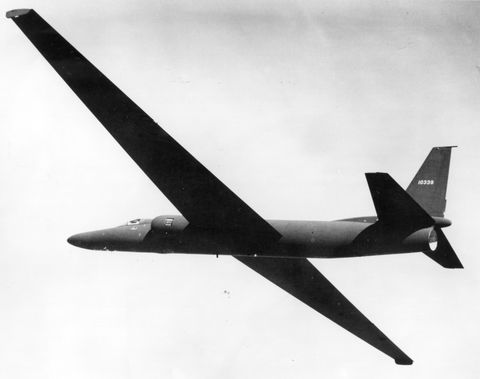The CIA Gave U-2 Pilots a Special Diet So They Wouldn't Have To Poop
The U-2 was no place for a Number Two.
By Kyle Mizokami GETTY IMAGES
GETTY IMAGESThe U-2 spy plane was famous for pushing pilot endurance to the limit. The slow, high-flying aircraft flew for up to nine hours at a time, with a single pilot guiding the plane, taking pictures of the ground below, and occasionally dodging surface-to-air missiles.
Nine hours is a long time to be cooped up in a plane without a real bathroom—or to be stuck in a small space with the smell of your own fart. So the CIA actually prescribed a proper diet for U-2 pilots to avoid the need to poop or pass gas.

U-2 cockpit.
PUBLIC DOMAIN
Beginning in the 1950s, the Central Intelligence Agency’s U-2 program launched secret surveillance missions against the Soviet Union, China, and other countries. Taking off from neighboring countries, CIA U-2s would fly over the airspace of communist bloc countries, taking thousands of pictures of the ground below. The missions recorded Soviet and Chinese progress in nuclear and conventional weapons and helped the United States deduce the intentions of both countries.
The missions were carried out in utmost secrecy and tightly controlled, so much so that the agency had strict living guidelines for pilots before and after missions. Pilots were advised to get at least ten hours of sleep and spend six hours performing “light exercise” (swimming, golf) and “relaxed activities” (chess, playing cards, hanging out with the family.)
The U-2 was built with a “relief tube” for urination, since no human could hold their bladder for nine hours. However, the secret aircraft did not have a mechanism for defecation. To get around this problem, the CIA, presumably using registered dietitians, recommended “high protein, low residue” diets to minimize poop creation.
Muckrock, a Freedom of Information Act website, recently posted online the CIA’s “U-2 Pilot Physical Maintenance Control Program.” The formerly top-secret manual includes tips to avoid needing to go number two, such as:
“Controlled feeding of a high protein, low residue diet for mission pilots should begin twenty-four hours prior to take-off. The objective of this controlled die is to provide foods which can be almost completely absorbed from the gastrointestinal tract, thereby leaving a minimum of residue for the formation of feces and intestinal gases.”
The manual goes on to explain, “This obviates the need for frequent defecation and decreases the likelihood of significant gaseous expansion in the intestinal tract.” Recommended foods included coffee, tea, rice, noodles, cottage cheese, eggs, meat, soups, sweets, and vegetables.
Foods not recommended? Milk, bread, “rich” desserts such as pies and pastries, fried foods, fatty foods, fruit, pickles, nuts, and of course, cheese. Spicy foods were out, which is really unfortunate considering many U-2 missions took off from places like South Korea, Turkey, and Taiwan. (Kimchi was definitely not on the good list.)
No comments:
Post a Comment